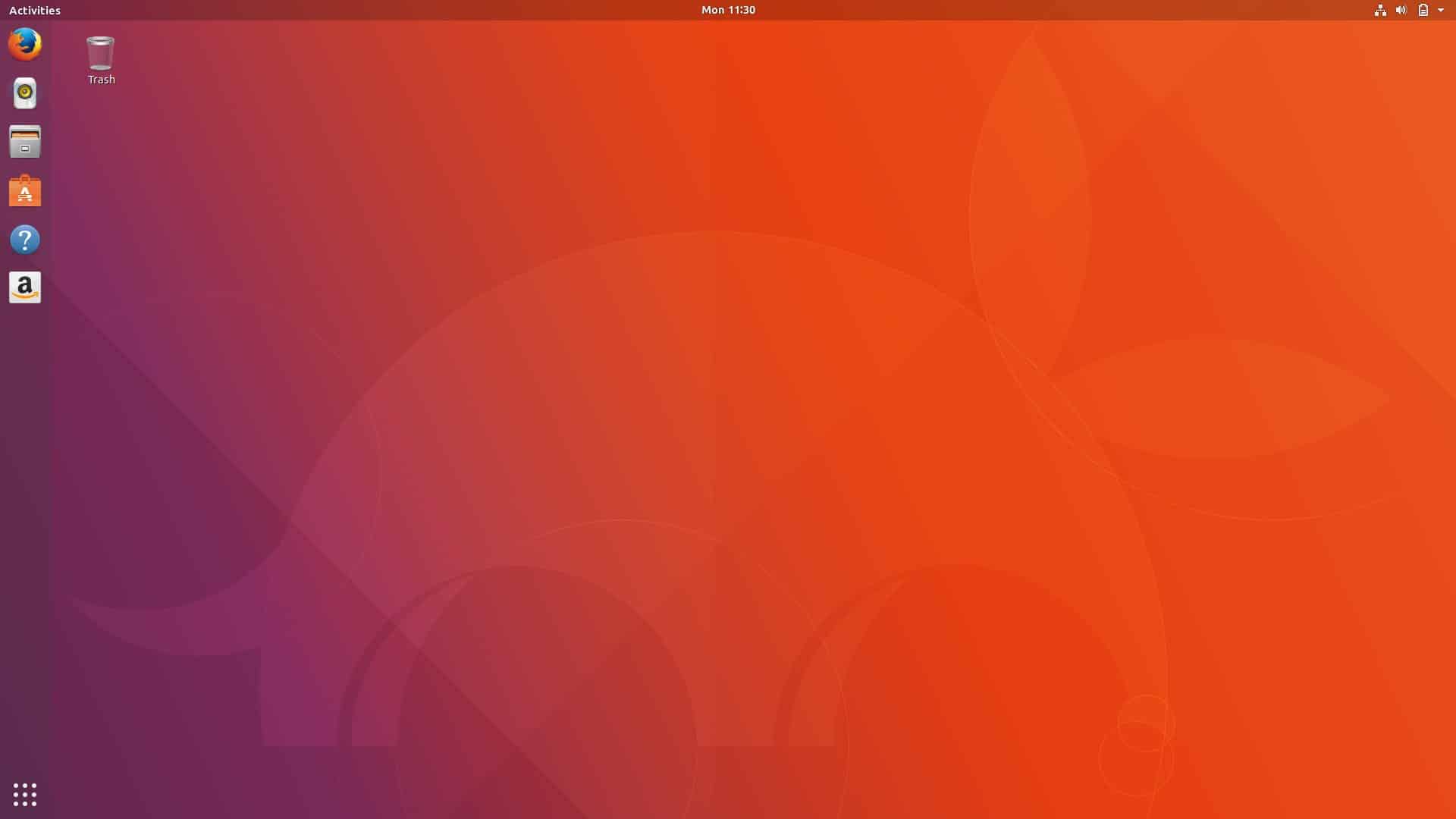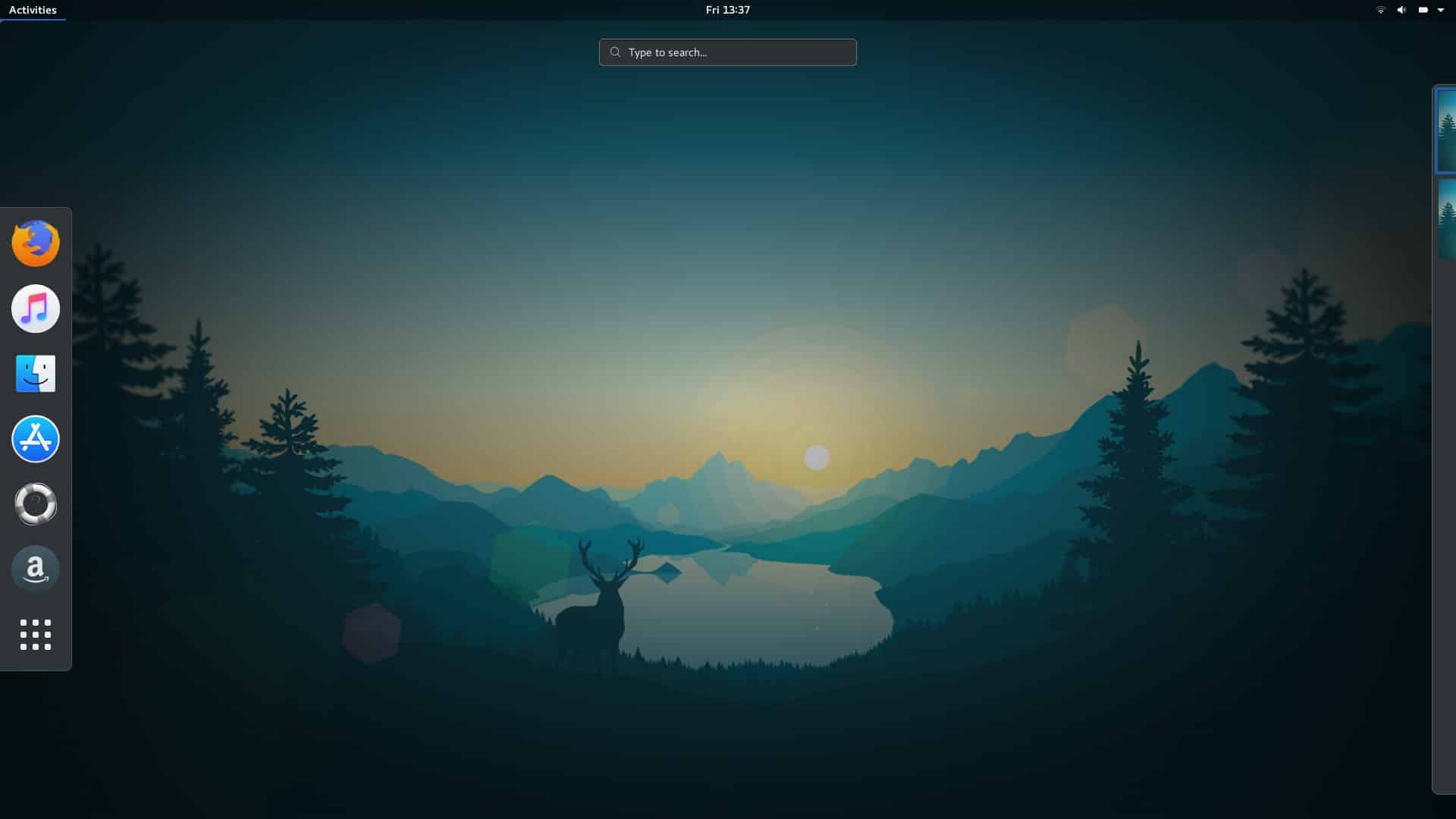With Ubuntu 17.10, Canonical ditched their Unity shell in favor of the GNOME shell. However, it isn’t exactly GNOME but a slightly modified version tweaked to look and feel like Unity. It makes sense from Canonical’s point of view, who possibly did not want to alienate the users of their Unity desktop. However, this might not sit well with those expecting a full-on GNOME experience. This is Linux we’re talking about though and you can get what you want. It is quite easy to install a vanilla GNOME shell on Ubuntu.
Vanilla GNOME vs Ubuntu GNOME
The modifications done by Canonical include a fork of the popular Dash to dock extension. It turns the hidden Gnome activities dock into a Unity-like permanent dock for navigating programs. They’ve also added support for Unity app indicators in the Gnome Shell panel, and some other minor adjustments.
If you’ve been a fan of Unity, you would welcome these changes because you may have ended up doing them yourself. Stock GNOME isn’t the perfect desktop that everybody likes. It is though, the choice of many users who may not appreciate the tweaks done by Canonical. These users can very easily restore the stock GNOME desktop environment. Once you have installed the desktop, you can add media controls to the system tray on Ubuntu GNOME.
Some of the differences between vanilla GNOME and the Ubuntu GNOME are:
- No Ubuntu Dock
- No app indicator support
- Adwaita GTK and icon theme
- Cantarell font is used
- Default Shell theme
- App windows only show a ‘close’ button
- Symbolic icons used in App Menu
- Activities Hot Corner
Installing Vanilla GNOME Shell on Ubuntu
- Launch a Terminal and execute the following command to install the stock GNOME session.
sudo apt install gnome-session
This will purge all of the various modifications made by Canonical. It will not do much else, such as providing the stock experience.
- You’ll still see the Ubuntu wallpaper and the Ubuntu GDM theme. This isn’t a problem for most users. However, to get the stock GNOME experience, you’ll need to install certain GNOME packages. You can do this with this command:
sudo apt install ubuntu-gnome-default-settings
- The above command restores the stock GNOME theme, wallpaper, and colors, as you find on any other GNOME-based Linux distro. You now have a choice between installing the Vanilla GNOME packages or the GNOME desktop packages. Vanilla GNOME packages change everything including login animation. Most users will do just fine with the GNOME desktop packages which are smaller and leave out several bundled software included in the Vanilla set.
- To install Vanilla GNOME packages, use this command:
sudo apt install vanilla-gnome-default-settings vanilla-gnome-desktop
- To install the GNOME desktop packages, execute this one:
sudo apt install ubuntu-gnome-desktop
Uninstall GNOME desktop
If you’ve tried the stock GNOME experience and decided you’re not a fan, you can remove it just as easily as you installed it. You can even restore the modifications done by Canonical to get back your Ubuntu GNOME experience. We will use the purge function to get rid of the installed packages. Unlike remove, it not only uninstalls the packages but also removes all traces of it such as configuration files, etc. Run the command given below in a terminal to remove the previously installed GNOME desktop packages.
sudo apt purge ubuntu-gnome-desktop ubuntu-gnome-default-settings gnome-session
Now use autoremove to remove any additional packages that may be left, and shouldn’t be there.
sudo apt autoremove
After this, log out of GNOME, click on the gear icon, select Ubuntu, and enter your password.
Uninstall Vanilla GNOME
The process of uninstalling Vanilla GNOME is the same, but more time-consuming since this requires removing more packages. The command you use is only as different as the one used during installation. Purge the Vanilla GNOME packages with this command:
sudo apt purge vanilla-gnome-default-settings vanilla-gnome-desktop
Run autoremove to get rid of any extra packages such as settings from the Ubuntu desktop.
sudo apt autoremove
Log out of Ubuntu once the process is complete and log back in. Now that you have installed GNOME, check out these tips to speed up your GNOME desktop.



